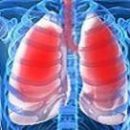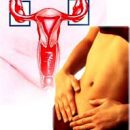What is fibrosis of the lungs? As evolving, an interstitial pulmonary disease is diagnosed and treated? In what cases is necessary transplantation? Answers to these questions you will find in this article.
Content
 Intersitial pulmonary disease is a common term, which includes more than 200 chronic pulmonary diseases. Interstitial pulmonary disease affects three stages:
Intersitial pulmonary disease is a common term, which includes more than 200 chronic pulmonary diseases. Interstitial pulmonary disease affects three stages:
- Damage to pulmonary fabric;
- caused by damage to the pulmonary tissue inflammation of the walls of air bags in the lungs;
- Sealing and scarring (fibrosis) in interstitial tissue (tissue between air bags), also leading to loss of lung elasticity.
Some of the known causes of the occurrence of interstitial lung disease include: Some autoimmune diseases. Common binding link between many forms of interstitial boThe light of the lungs is inflammation at the initial stage: bronchiolitis - inflammation Bronchiol or Alveolit - inflammation of alveoli (air bags). Inflammation can also touch the small blood vessels - Vasculitis. Fibrosis, or scarring of pulmonary fabric, leads to an irreversible loss of tissue ability to carry oxygen.
Some of the known causes of the occurrence of interstitial lung disease include: some autoimmune diseases (for example, systemic red lupus, rheumatoid arthritis), the effects of inorganic and organic dust (silicosis, asbestos, bacteria) and gases. Radiotherapy and some types of drugs can cause interstitial pulmonary disease.
Among the symptoms of an interstitial pulmonary disease: fatigue, weakness, weight loss, discomfort in the chest, dry cough, hemorrhage into the lungs.
Interstitial lung disease is diagnosed by physical inspection, chest x-ray, pulmonary analyzes and blood tests.
Also in some cases, computed tomography is made because it gives more detailed information than ordinary X-rays.
Treatment may consist of oral drugs, including corticosteroids, flu vaccines, vaccine against pneumococcal pneumonia, oxygen from portable containers. If the case is extremely heavy, the lung transplantation becomes one of the treatment options.
Light transplantation is a surgical procedure used in cases in which patients are at the final stages of lung diseases, an irreversible state, which may occur as a result of a number of diseases. Indication for lung transplantation often are severe cases of pulmonary fibrosis.
Lungal transplantation is carried out to replace one lung or both if they are no longer able to transmit oxygen and carbon dioxide in and from cells.
The transplantation of the lungs from the dead donor is the type of transplant, in which the lungs are taken from the donor who has moved cerebral death. The lung transplantation from the living donor is a surgical removal of the lower right lobe of the lung of one donor and the left lower share in another donor, with the subsequent implantation of these fractions of the recipient. In some cases, when the heart is weakened by the suffering diseases, implanted the heart and lungs at the same time.
When donor lungs appear, the transplant rate is crucial. Lights must be implanted by the patient within 4-6 hours. After removing the lungs at the donor, the organ is processed and packaged for transportation. Patients are prepared for transplantation. This training includes common anesthesia and connection to an artificial respiratory machine (heart-lungs). Transplantation of one lung takes from four to eight hours, while the transplant of both lungs takes from six to twelve hours.
After transplantation, patients are necessary throughout life to take the so-called immunosuppressor medicines to reduce the risk of rehabilitation of the transplanted light by the body.









